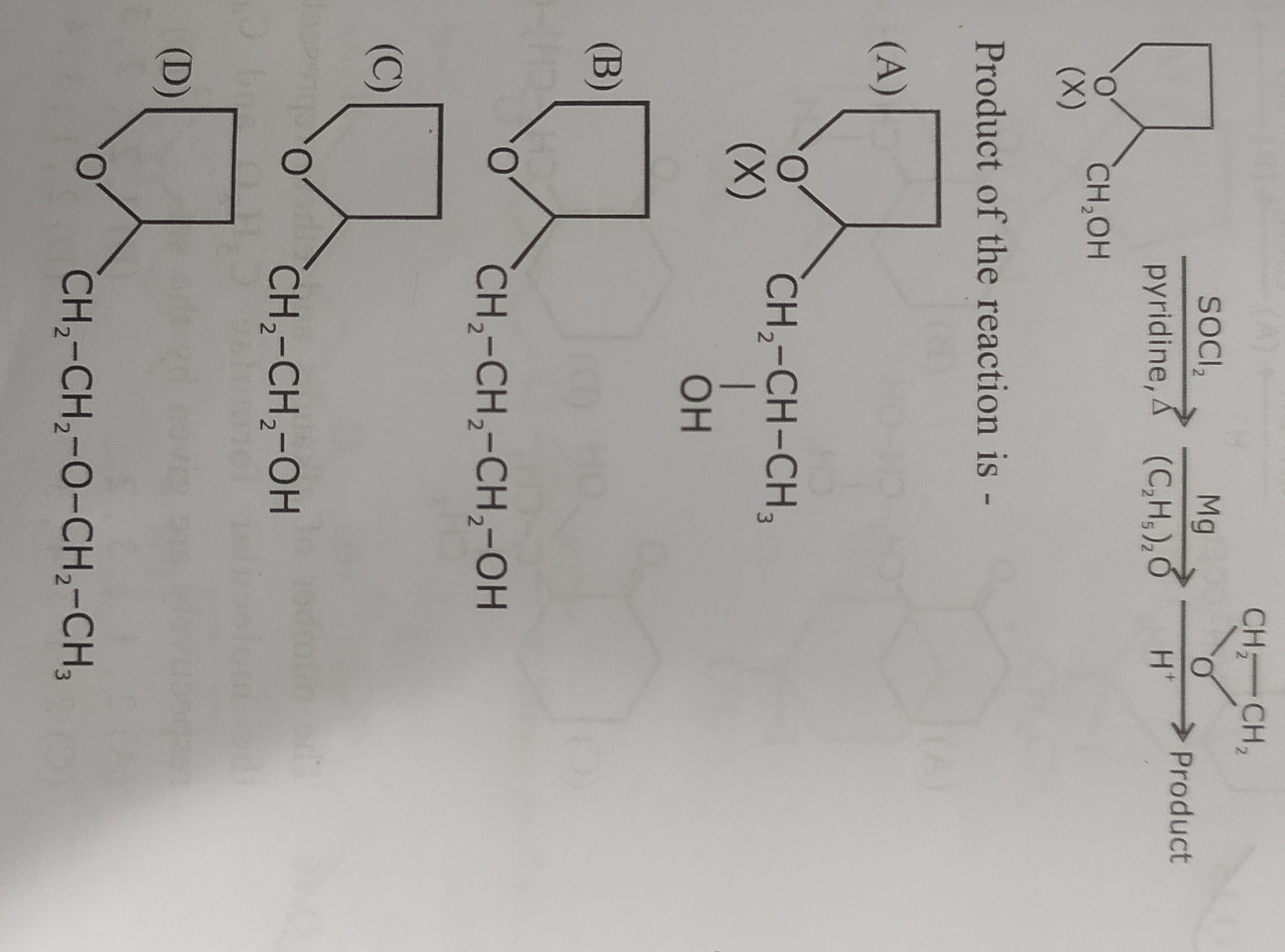Question
Question: The starting material, 2-(hydroxymethyl)tetrahydrofuran, undergoes a three-step reaction. First, the...
The starting material, 2-(hydroxymethyl)tetrahydrofuran, undergoes a three-step reaction. First, the primary alcohol (-CH₂OH) is converted to an alkyl chloride (-CH₂Cl) using thionyl chloride (SOCl₂) and pyridine. Second, the alkyl chloride reacts with magnesium (Mg) in diethyl ether to form a Grignard reagent (-CH₂MgCl). Finally, treatment with a proton source (H⁺) protonates the Grignard reagent, converting the -CH₂MgCl group to a methyl group (-CH₃). Thus, the overall transformation replaces the -CH₂OH group with a -CH₃ group, yielding 2-methyltetrahydrofuran.
Starting Material (X): 2-(hydroxymethyl)tetrahydrofuran
Reaction Steps:
-
Alcohol to Alkyl Chloride: 2-(hydroxymethyl)tetrahydrofuran + SOCl₂ pyridine,Δ 2-(chloromethyl)tetrahydrofuran
-
Alkyl Chloride to Grignard Reagent: 2-(chloromethyl)tetrahydrofuran + Mg (C2H5)2O Tetrahydrofuran-2-ylmethylmagnesium chloride
-
Grignard Reagent Protonation: Tetrahydrofuran-2-ylmethylmagnesium chloride + H⁺ → 2-methyltetrahydrofuran
Product (Option A): 2-methyltetrahydrofuran

2-methyltetrahydrofuran
2-ethyltetrahydrofuran
2-propyltetrahydrofuran
2-butyltetrahydrofuran
2-methyltetrahydrofuran
Solution
The starting material, 2-(hydroxymethyl)tetrahydrofuran, is converted to an alkyl chloride using thionyl chloride and pyridine. This alkyl chloride then forms a Grignard reagent upon reaction with magnesium. Finally, protonation of the Grignard reagent yields 2-methyltetrahydrofuran, effectively replacing the -CH₂OH group with a -CH₃ group.
